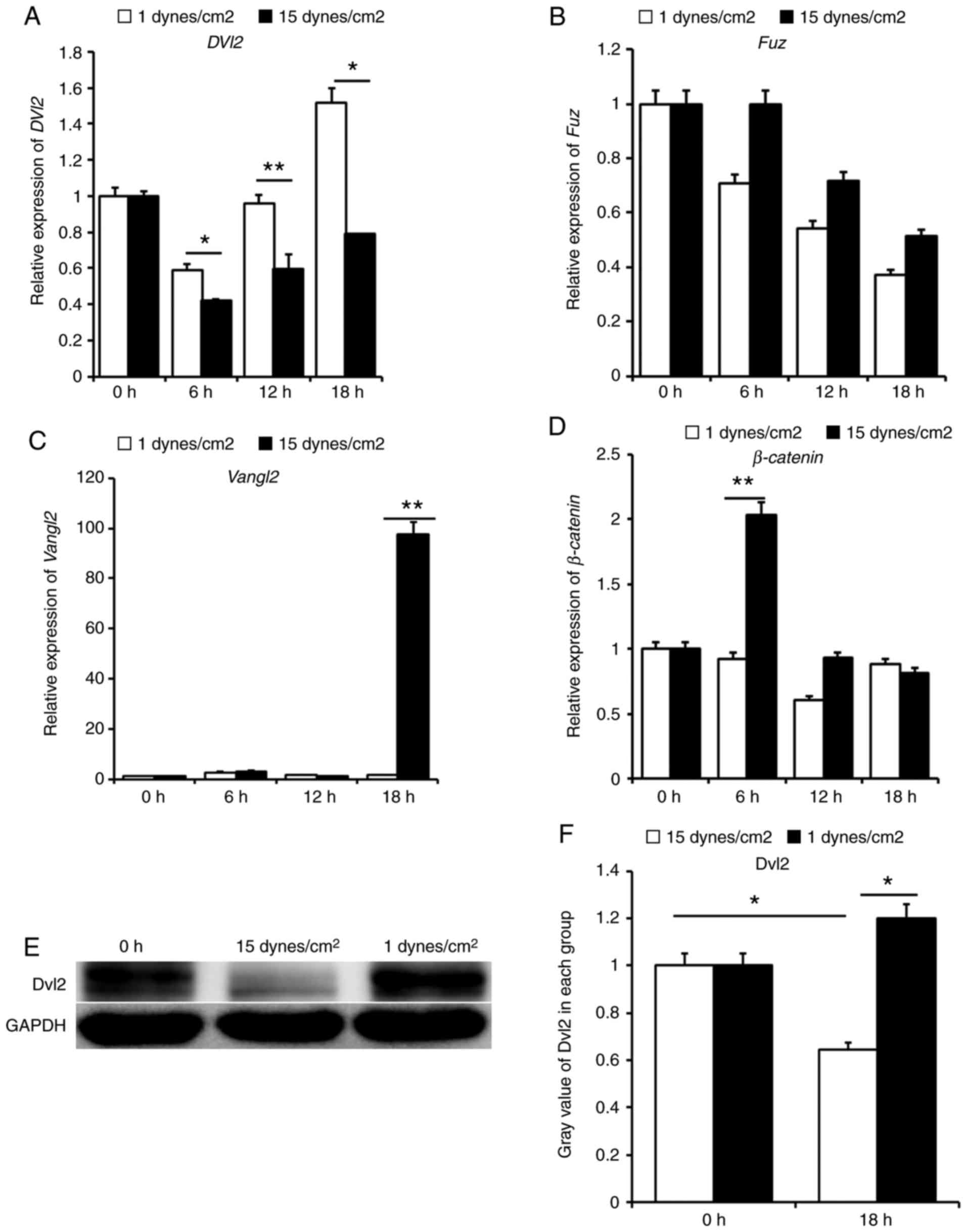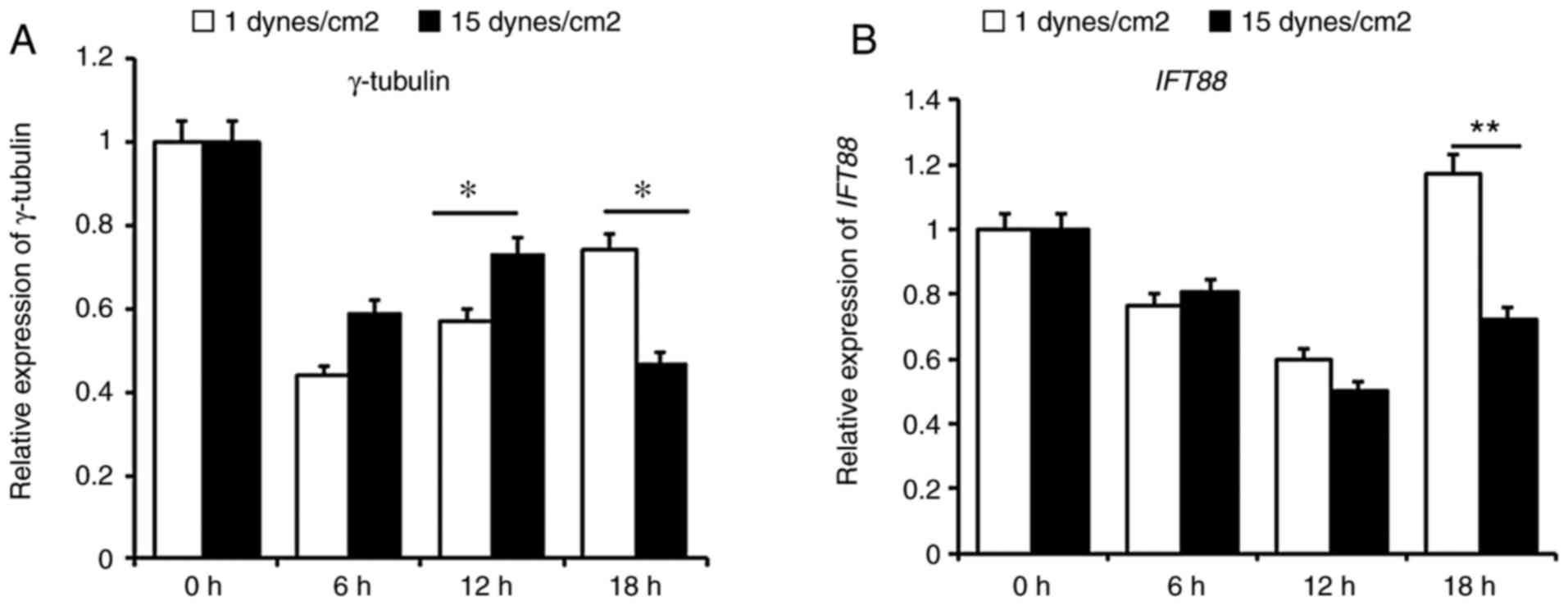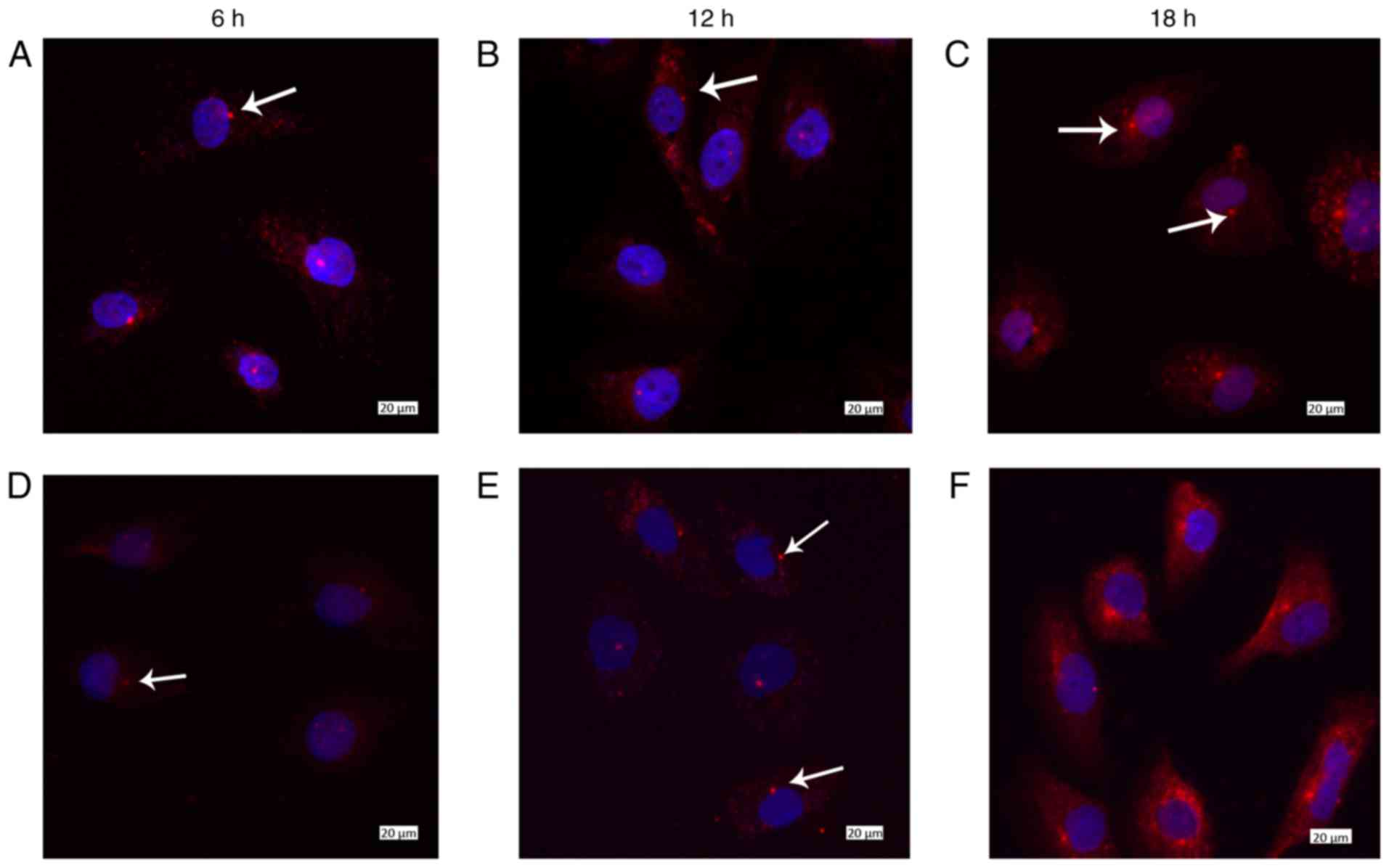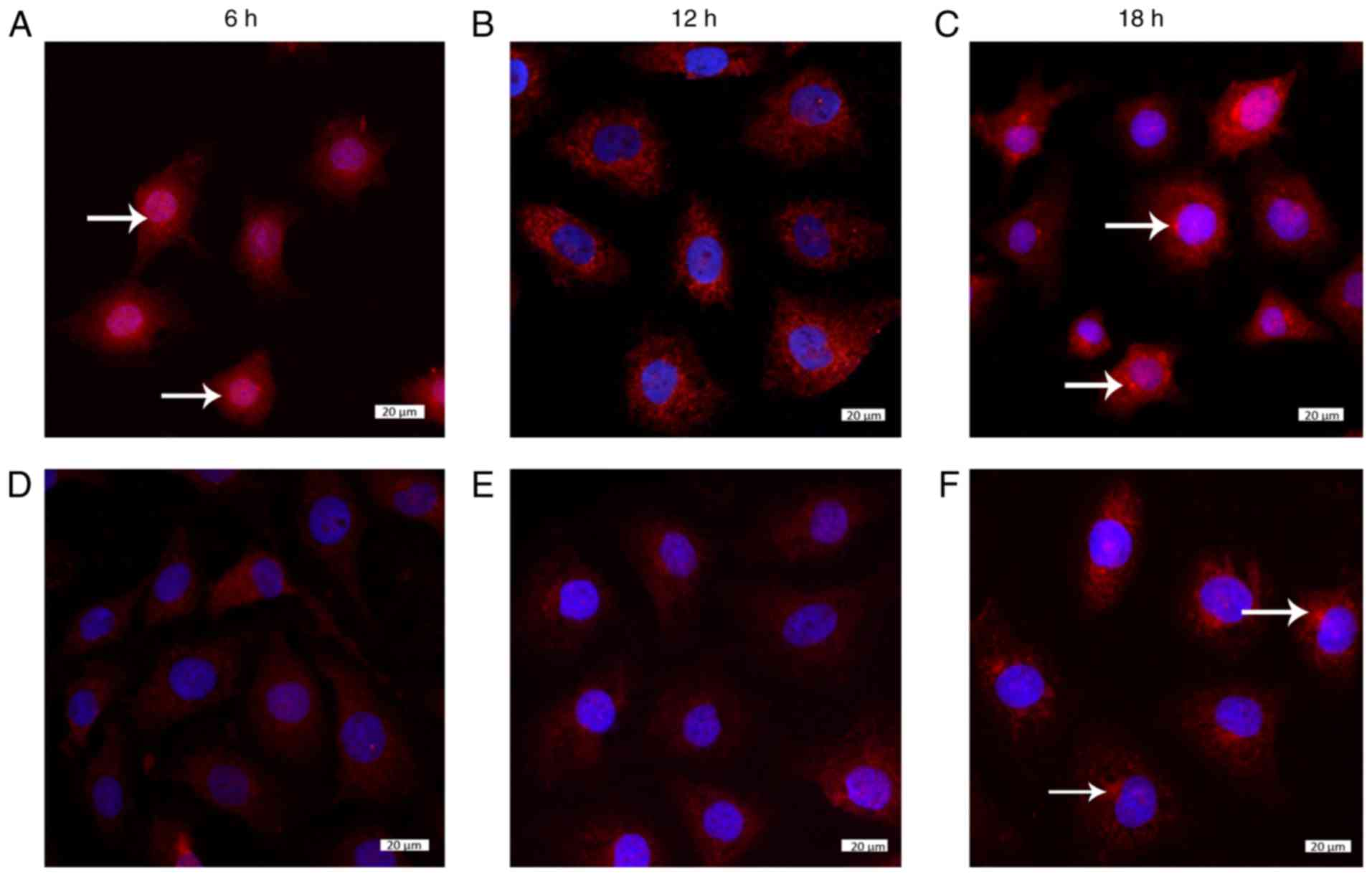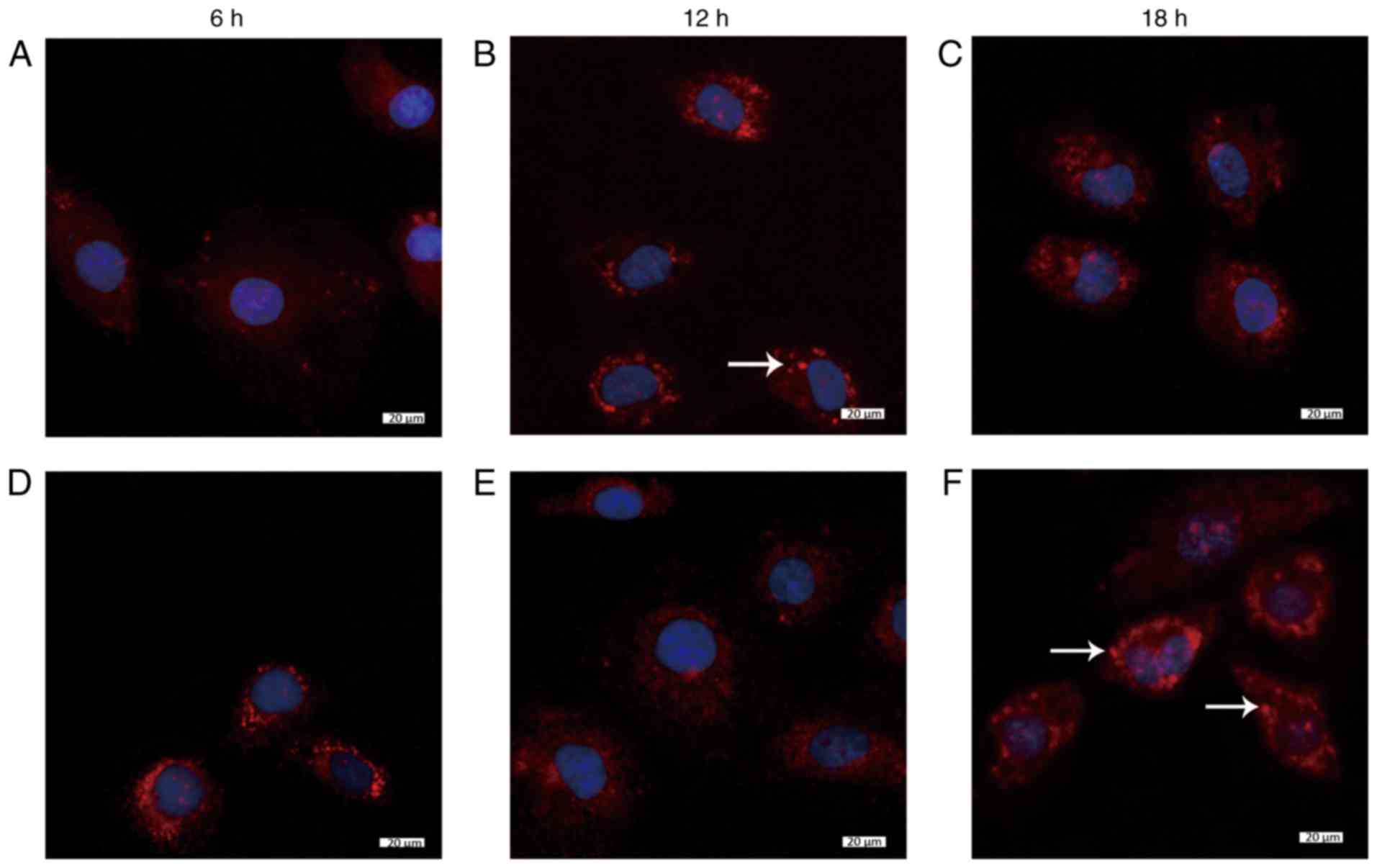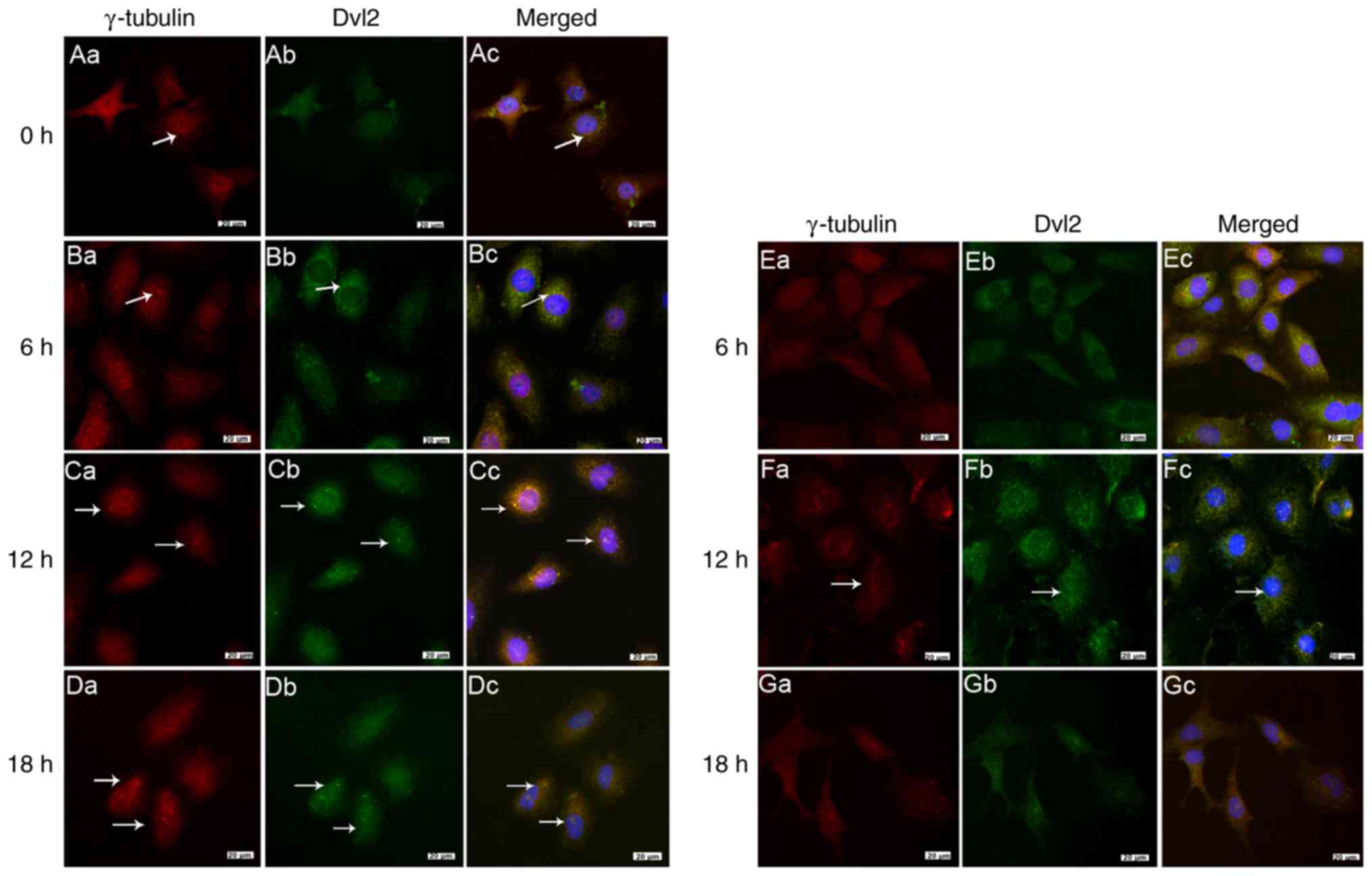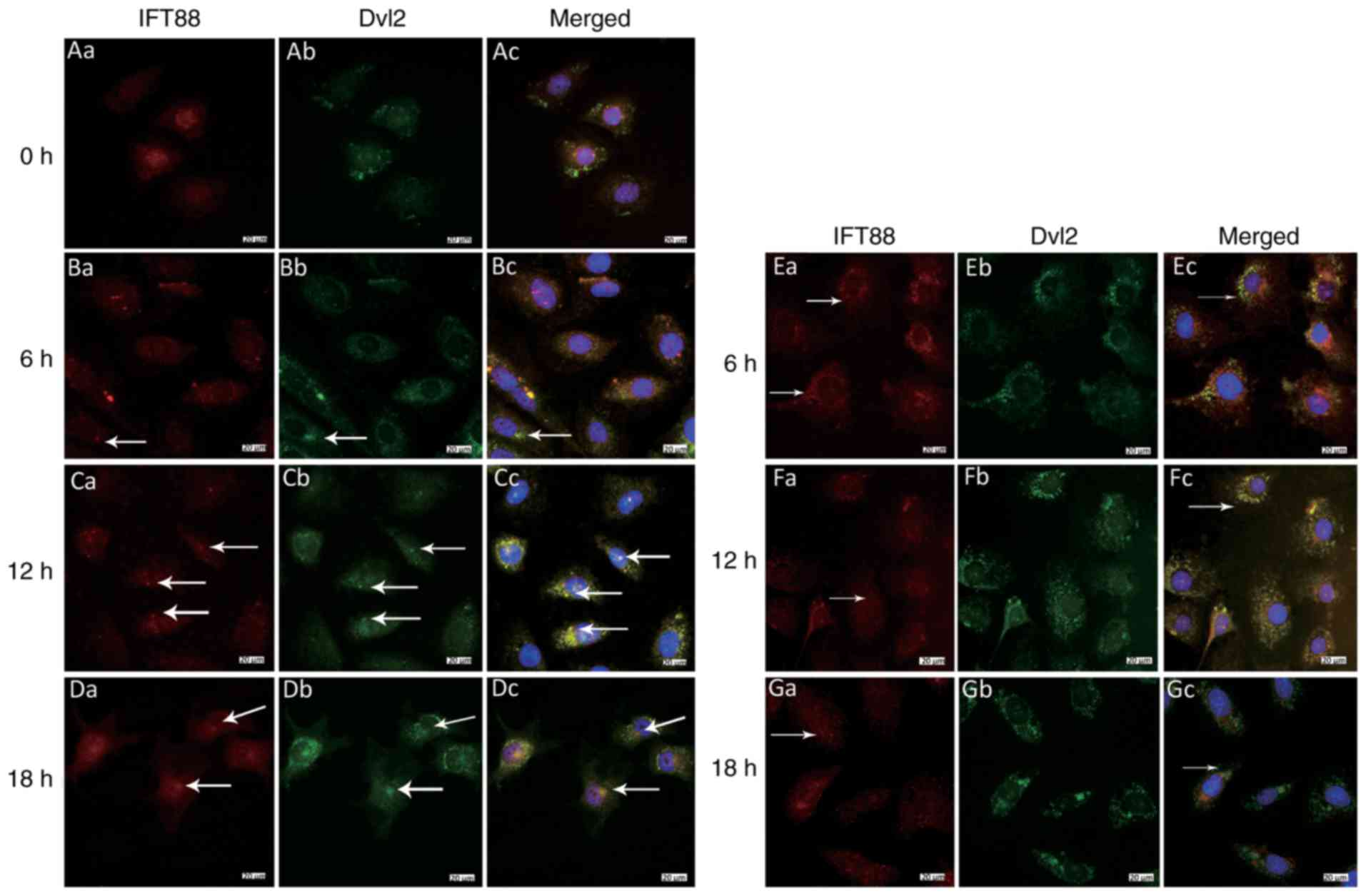|
1
|
Hahn C and Schwartz MA:
Mechanotransduction in vascular physiology and atherogenesis. Nat
Rev Mol Cell Biol. 10:53–62. 2009. View
Article : Google Scholar : PubMed/NCBI
|
|
2
|
Egorova AD, van der Heiden K, Poelmann RE
and Hierck BP: Primary cilia as biomechanical sensors in regulating
endothelial function. Differentiation. 83(Suppl): S56–S61. 2012.
View Article : Google Scholar
|
|
3
|
Satir P, Pedersen LB and Christensen ST:
The primary cilium at a glance. J Cell Sci. 123:499–503. 2010.
View Article : Google Scholar : PubMed/NCBI
|
|
4
|
Shaheen R, Szymanska K, Basu B, Patel N,
Ewida N, Faqeih E, Al Hashem A, Derar N, Alsharif H, Aldahmesh MA,
et al: Characterizing the morbid genome of ciliopathies. Genome
Biol. 17:2422016. View Article : Google Scholar : PubMed/NCBI
|
|
5
|
Nauli SM, Alenghat FJ, Luo Y, Williams E,
Vassilev P, Li X, Elia AE, Lu W, Brown EM, Quinn SJ, et al:
Polycystins 1 and 2 mediate mechanosensation in the primary cilium
of kidney cells. Nat Genet. 33:129–137. 2003. View Article : Google Scholar : PubMed/NCBI
|
|
6
|
Nauli SM, Kawanabe Y, Kaminski JJ, Pearce
WJ, Ingber DE and Zhou J: Endothelial cilia are fluid shear sensors
that regulate calcium signaling and nitric oxide production through
polycystin-1. Circulation. 117:1161–1171. 2008. View Article : Google Scholar : PubMed/NCBI
|
|
7
|
Marshall WF: Cilia self-organize in
response to planar cell polarity and flow. Nat Cell Biol.
12:314–315. 2010. View Article : Google Scholar : PubMed/NCBI
|
|
8
|
Iomini C, Tejada K, Mo W, Vaananen H and
Piperno G: Primary cilia of human endothelial cells disassemble
under laminar shear stress. J Cell Biol. 164:811–817. 2004.
View Article : Google Scholar : PubMed/NCBI
|
|
9
|
Van der Heiden K, Groenendijk BC, Hierck
BP, Hogers B, Koerten HK, Mommaas AM, Gittenberger-de Groot AC and
Poelmann RE: Monocilia on chicken embryonic endocardium in low
shear stress areas. Dev Dyn. 235:19–28. 2006. View Article : Google Scholar
|
|
10
|
Van der Heiden K, Hierck BP, Krams R, de
Crom R, Cheng C, Baiker M, Pourquie MJ, Alkemade FE, DeRuiter MC,
Gittenberger-de Groot AC and Poelmann RE: Endothelial primary cilia
in areas of disturbed flow are at the base of atherosclerosis.
Atherosclerosis. 196:542–550. 2008. View Article : Google Scholar
|
|
11
|
Espinha LC, Hoey DA, Fernandes PR,
Rodrigues HC and Jacobs CR: Oscillatory fluid flow influences
primary cilia and microtubule mechanics. Cytoskeleton (Hoboken).
71:435–445. 2014. View
Article : Google Scholar
|
|
12
|
Angers S and Moon RT: Proximal events in
Wnt signal transduction. Nat Rev Mol Cell Biol. 10:468–477. 2009.
View Article : Google Scholar : PubMed/NCBI
|
|
13
|
Maung SM and Jenny A: Planar cell polarity
in Drosophila. Organogenesis. 7:165–179. 2011. View Article : Google Scholar : PubMed/NCBI
|
|
14
|
Boutin C, Labedan P, Dimidschstein J,
Richard F, Cremer H, André P, Yang Y, Montcouquiol M, Goffinet AM
and Tissir F: A dual role for planar cell polarity genes in
ciliated cells. Proc Natl Acad Sci USA. 111:E3129–E3138. 2014.
View Article : Google Scholar : PubMed/NCBI
|
|
15
|
Jia YY, Li F, Geng N, Gong P, Huang SJ,
Meng LX, Lan J and Ban Y: Fluid flow modulates the expression of
genes involved in the Wnt signaling pathway in osteoblasts in 3D
culture conditions. Int J Mol Med. 33:1282–1288. 2014. View Article : Google Scholar : PubMed/NCBI
|
|
16
|
McCue S, Dajnowiec D, Xu F, Zhang M,
Jackson MR and Langille BL: Shear stress regulates forward and
reverse planar cell polarity of vascular endothelium in vivo and in
vitro. Circ Res. 98:939–946. 2006. View Article : Google Scholar : PubMed/NCBI
|
|
17
|
Tatin F, Taddei A, Weston A, Fuchs E,
Devenport D, Tissir F and Makinen T: Planar cell polarity protein
Celsr1 regulates endothelial adherens junctions and directed cell
rearrangements during valve morphogenesis. Dev Cell. 26:31–44.
2013. View Article : Google Scholar : PubMed/NCBI
|
|
18
|
Franco CA, Jones ML, Bernabeu MO, Vion AC,
Barbacena P, Fan J, Mathivet T, Fonseca CG, Ragab A, Yamaguchi TP,
et al: Non-canonical Wnt signalling modulates the endothelial shear
stress flow sensor in vascular remodelling. Elife. 5:e077272016.
View Article : Google Scholar : PubMed/NCBI
|
|
19
|
May-Simera HL and Kelley MW: Cilia, Wnt
signaling, and the cytoskeleton. Cilia. 1:72012. View Article : Google Scholar
|
|
20
|
Wallingford JB and Mitchell B: Strange as
it may seem: The many links between Wnt signaling, planar cell
polarity, and cilia. Genes Dev. 25:201–213. 2011. View Article : Google Scholar : PubMed/NCBI
|
|
21
|
Livak KJ and Schmittgen TD: Analysis of
relative gene expression data using real-time quantitative PCR and
the 2(-Delta Delta C(T)) method. Methods. 25:402–408. 2001.
View Article : Google Scholar
|
|
22
|
Bonewald LF and Johnson ML: Osteocytes,
mechanosensing and Wnt signaling. Bone. 42:606–615. 2008.
View Article : Google Scholar : PubMed/NCBI
|
|
23
|
Lara-Castillo N, Kim-Weroha NA, Kamel MA,
Javaheri B, Ellies DL, Krumlauf RE, Thiagarajan G and Johnson ML:
In vivo mechanical loading rapidly activates beta-catenin signaling
in osteocytes through a prostaglandin mediated mechanism. Bone.
76:58–66. 2015. View Article : Google Scholar : PubMed/NCBI
|
|
24
|
Lai JK and Stainier DY: Pushing yap into
the nucleus with shear force. Dev Cell. 40:517–518. 2017.
View Article : Google Scholar : PubMed/NCBI
|
|
25
|
Sheng R, Kim H, Lee H, Xin Y, Chen Y, Tian
W, Cui Y, Choi JC, Doh J, Han JK and Cho W: Cholesterol selectively
activates canonical Wnt signalling over non-canonical Wnt
signalling. Nat Commun. 5:43932014. View Article : Google Scholar : PubMed/NCBI
|
|
26
|
Chen X, Guo J, Yuan Y, Sun Z, Chen B, Tong
X, Zhang L, Shen C and Zou J: Cyclic compression stimulates
osteoblast differentiation via activation of the Wnt/beta-catenin
signaling pathway. Mol Med Rep. 15:2890–2896. 2017. View Article : Google Scholar : PubMed/NCBI
|
|
27
|
Niu Q, Li F, Zhang L, Xu X, Liu Y, Gao J
and Feng X: Role of the Wnt/beta-catenin signaling pathway in the
response of chondrocytes to mechanical loading. Int J Mol Med.
37:755–762. 2016. View Article : Google Scholar : PubMed/NCBI
|
|
28
|
Curtis-Whitchurch L, Rekapally H and
Hoying J: Phosphorylation and redistribution of Vangl2, a planar
cell polarity protein, in endothelial cells in response to laminar
shear stress. Faseb J. 31:2017.
|
|
29
|
Solter KM and Gibor A: The relationship
between tonicity and flagellar length. Nature. 275:651–652. 1978.
View Article : Google Scholar : PubMed/NCBI
|
|
30
|
Slough J, Cooney L and Brueckner M:
Monocilia in the embryonic mouse heart suggest a direct role for
cilia in cardiac morphogenesis. Dev Dyn. 237:2304–2314. 2008.
View Article : Google Scholar : PubMed/NCBI
|
|
31
|
Li XM, Sheng X, Guo PF, Chen CH and He L:
Changes on morphology and ciliogenesis of hUVECs loaded on
different flow shear stress. Life Sci Res. 19:13–18. 2015.
|
|
32
|
Park TJ, Mitchell BJ, Abitua PB, Kintner C
and Wallingford JB: Dishevelled controls apical docking and planar
polarization of basal bodies in ciliated epithelial cells. Nat
Genet. 40:871–879. 2008. View
Article : Google Scholar : PubMed/NCBI
|
|
33
|
Lee KH, Johmura Y, Yu LR, Park JE, Gao Y,
Bang JK, Zhou M, Veenstra TD, Yeon Kim B and Lee KS: Identification
of a novel Wnt5a-CK1varepsilon-Dvl2-Plk1-mediated primary cilia
disas-sembly pathway. EMBO J. 31:3104–3117. 2012. View Article : Google Scholar : PubMed/NCBI
|
|
34
|
Borovina A, Superina S, Voskas D and
Ciruna B: Vangl2 directs the posterior tilting and asymmetric
localization of motile primary cilia. Nat Cell Biol. 12:407–412.
2010. View Article : Google Scholar : PubMed/NCBI
|
|
35
|
Guirao B, Meunier A, Mortaud S, Aguilar A,
Corsi JM, Strehl L, Hirota Y, Desoeuvre A, Boutin C, Han YG, et al:
Coupling between hydrodynamic forces and planar cell polarity
orients mammalian motile cilia. Nat Cell Biol. 12:341–350. 2010.
View Article : Google Scholar : PubMed/NCBI
|
|
36
|
Fliegauf M, Benzing T and Omran H: When
cilia go bad: Cilia defects and ciliopathies. Nat Rev Mol Cell
Biol. 8:880–893. 2007. View Article : Google Scholar : PubMed/NCBI
|
|
37
|
Park TJ, Haigo SL and Wallingford JB:
Ciliogenesis defects in embryos lacking inturned or fuzzy function
are associated with failure of planar cell polarity and Hedgehog
signaling. Nat Genet. 38:303–311. 2006. View Article : Google Scholar : PubMed/NCBI
|
|
38
|
Gray RS, Abitua PB, Wlodarczyk BJ,
Szabo-Rogers HL, Blanchard O, Lee I, Weiss GS, Liu KJ, Marcotte EM,
Wallingford JB and Finnell RH: The planar cell polarity effector
Fuz is essential for targeted membrane trafficking, ciliogenesis
and mouse embryonic development. Nat Cell Biol. 11:1225–1232. 2009.
View Article : Google Scholar : PubMed/NCBI
|
|
39
|
Dai D, Zhu H, Wlodarczyk B, Zhang L, Li L,
Li AG, Finnell RH, Roop DR and Chen J: Fuz controls the
morphogenesis and differentiation of hair follicles through the
formation of primary cilia. J Invest Dermatol. 131:302–310. 2011.
View Article : Google Scholar
|
|
40
|
Zilber Y, Babayeva S, Seo JH, Liu JJ,
Mootin S and Torban E: The PCP effector Fuzzy controls cilial
assembly and signaling by recruiting Rab8 and Dishevelled to the
primary cilium. Mol Biol Cell. 24:555–565. 2013. View Article : Google Scholar : PubMed/NCBI
|
|
41
|
Brooks ER and Wallingford JB: Control of
vertebrate intraflagellar transport by the planar cell polarity
effector Fuz. J Cell Biol. 198:37–45. 2012. View Article : Google Scholar : PubMed/NCBI
|
|
42
|
Lancaster MA, Schroth J and Gleeson JG:
Subcellular spatial regulation of canonical Wnt signalling at the
primary cilium. Nat Cell Biol. 13:700–707. 2011. View Article : Google Scholar : PubMed/NCBI
|



